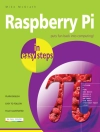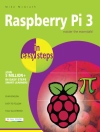This book is supposed to serve as a comprehensive and instructive guide through the new world of digital communication. On the physical layer optical and electrical cabling technology are described as well as wireless communication technologies. On the data link layer local area networks (LANs) are introduced together with the most popular LAN technologies such as Ethernet, Token Ring, FDDI, and ATM as well as wireless LAN technologies including IEEE 802.x, Bluetooth, or Zig Bee. A wide range of WAN technologies are covered including contemporary high speed technologies like PDH and SDH up to high speed wireless WANs (Wi MAX) and 4th generation wireless telephone networks LTE. Routing technologies conclude the treatment of the data link layer. Next, there is the Internet layer with the Internet protocol IP that establishes a virtual uniform network out of the net of heterogeneous networks. In detail, both versions, IPv4 as well as the successor IPv6 are covered in detail as well as ICMP, NDP, and Mobile IP. In the subsequent transport layer protocol functions are provided to offer a connection-oriented and reliable transport service on the basis of the simple and unreliable IP. The basic protocols TCP and UDP are introduced as well as NAT, the network address translation. Beside transport layer security protocols like SSL and TLS are presented. On the upmost application layer popular Internet application protocols are described like DNS, SMTP, PGP, (S)FTP, NFS, SSH, DHCP, SNMP, RTP, RTCP, RTSP, and World Wide Web.
Cuprins
Prologue.- The Foundation of the Internet : TCP/IP Reference Model.- Physical Layer.- Network Access Layer (1): Wired LAN Technologies.- Network Access Layer (2): Wireless Mobile LAN Technologies.- Network Access Layer (3): WAN Technologies.- Internet Layer.- Transport Layer.- Application Layer and Internet Applications.- Epilogue.- List of Persons.- Abbreviations and Acronyms.- Bibliography.- Index.
Despre autor
Dr. sc. nat. Christoph Meinel (1954) is President and CEO of the Hasso-Plattner-Institut for IT-Systems Engineering (HPI) and full professor (C4) for computer science at the University of Potsdam. His research field is Internet and Web Technologies and Systems. Beside he is a teacher at the HPI School of Design Thinking, a visiting professor at the Computer Science School of the Technical University of Beijing (China) and a research fellow of the interdisciplinary center Sn T at the University of Luxembourg. Since 2008 he is program director of the HPI–Stanford Design Thinking Research Program. He is author or co-author of 10 text books and monographs and has published more than 350 per-reviewed scientific papers in highly recognised international scientific journals and conferences.
Harald Sack is Senior Researcher at the Hasso Plattner-Institute for IT-Systems Engineering (HPI) at the University of Potsdam. After graduating in computer science at the University of the Federal Forces Munich Campus in 1990, he worked as systems/network engineer and project manager in the signal intelligence corps of the German federal forces from 1990–1997. In 1997 he became an associated member of the graduate program ‘mathematical optimization’ at the University of Trier and graduated with a Ph D thesis on formal verification in 2002. From 2002–2008 he did research and teaching as a postdoc at the Friedrich-Schiller-University in Jena and since 2007 he has a visiting position at the HPI, where he now is head of the research group ‘semantic technologies’. His areas of research include multimedia retrieval, semantic web technologies, knowledge representations, machine learning and semantic enabled retrieval. Since 2008 he also serves as general secretary of the German IPv6 council.












